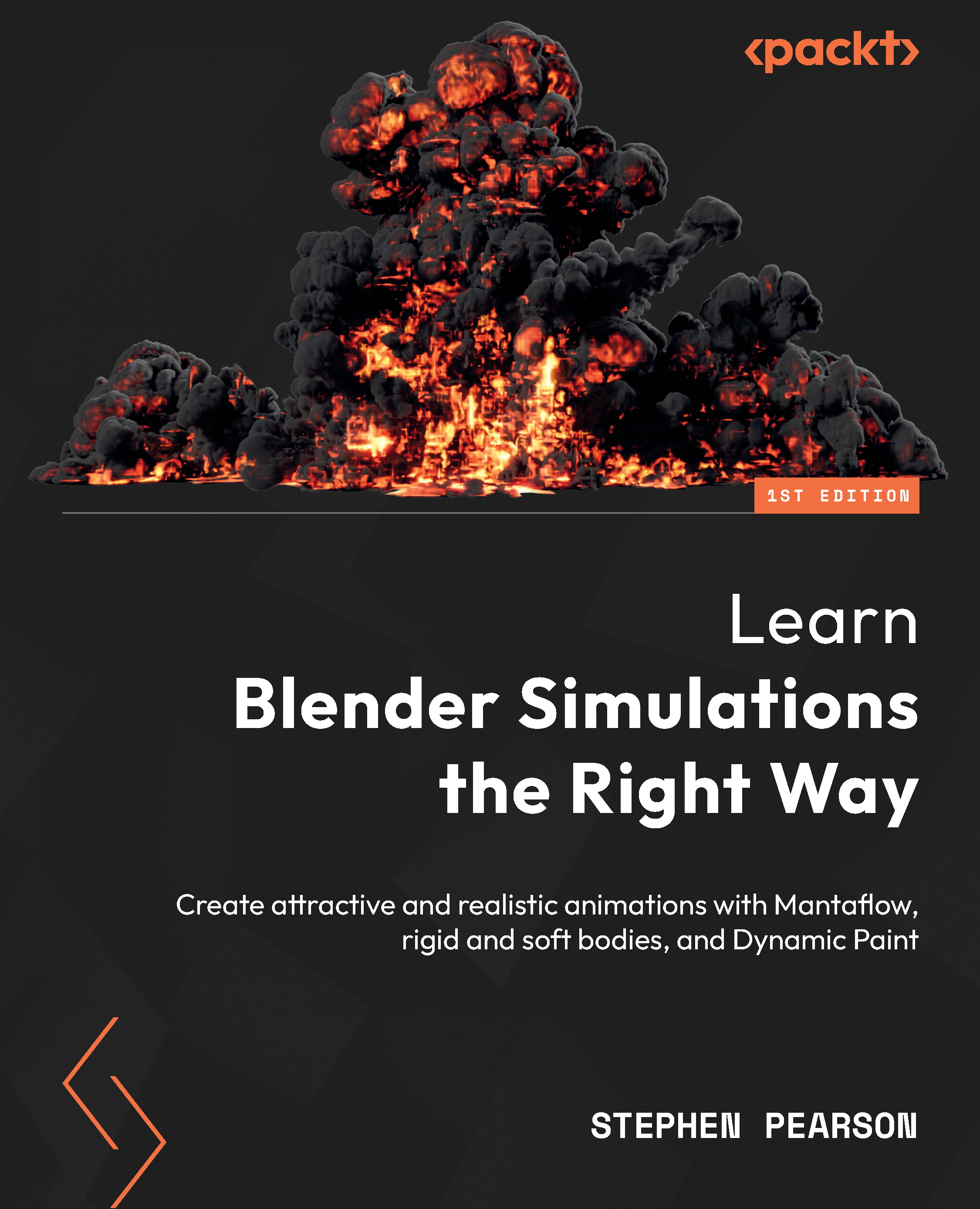Summary
The goal of this chapter was to give you an understanding of soft body simulations so that you can go out and create your own without having to test every setting to see what it does! We have learned quite a bit, so let’s do a quick recap!
First, we discussed how a soft body simulation works and what you need to get started. Then, we learned about collision objects and how they interact with the simulation. Next up were all the settings for soft body objects. We talked about vertex groups and how they interact with Soft Body Goal. We went over all the settings for Edges, Self Collision, Solver, and Field Weights, and finally, we ended by learning how to interact multiple soft body objects together.
A soft body simulation is very useful and can save a lot of time when animating and modeling. Be sure to use it in the right way, though, because it is sometimes simpler to do a quick animation rather than a full soft body simulation. In the next chapter, we will be...
































































